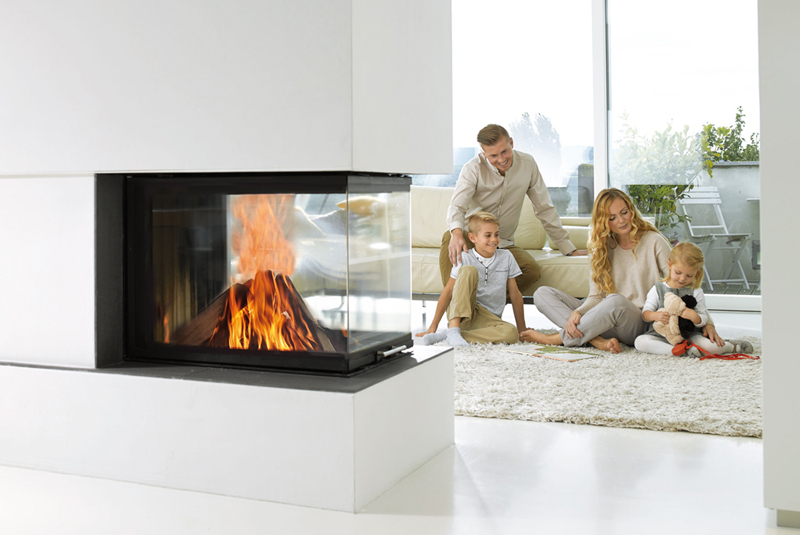
Wood heating has experienced a huge upsurge in popularity over the past decade. As there is no legal requirement to hold a specific qualification, effectively anyone can buy and fit a wood burning stove. Proceeding with stove installation without proper knowledge (and caution) is dangerous and poses serious or even fatal risks, explains David Wright, Residential Sales & Marketing Manager of Schiedel Chimney Systems.
An increased awareness of environmental issues, together with rocketing fuel prices, has led to a dramatic uptake in demand for wood burning domestic heating systems. More than one million UK homes are already using wood burning stoves and fireplaces, and this could be set to rise as the Stove Industry Alliance estimates that wood burning stoves could account for 10% of the UK Government’s carbon reduction targets by 2020.
The installation of wood burning and multi-fuel stoves is “controlled” under the Building Regulations, as is the relining or installation of flues and chimneys associated with such heat producing appliances. While on the face of things, this should mean that stove installation work is being carried out by a HETAS installer or getting checked by building control, the reality is that many stoves get put in unchecked.
HETAS approval
Poorly installed stoves pose very real risks; from carbon monoxide poisoning to house fires and smoke inhalation, all of which can have devastating and fatal consequences.
Although qualifications are not mandatory, we would always recommend undertaking a HETAS approved training course to ensure you have the correct skills and understand best-practice for installation. If you are going to carry out stove fitting work, equipping yourself with knowledge of the concept of solid fuel heating and its various elements will enable you to deliver practical and professional advice to your customers.
Becoming a member of HETAS will also see your business benefit from being associated with a trusted brand and its marketing efforts.
Choosing a stove
Wood burning appliances in the UK are self-certified under the Construction Products Directive, but the criteria are often misunderstood. To be really sure a stove’s up to scratch, choose a HETAS approved one, which comes from an experienced manufacturer with clear instructions.
Apart from the safety element, what wood burning stoves can do has moved on apace. With so much choice, you and your customers have a lot more to think about when making a purchase. As an installer, you need to consider your customers lifestyle, requirements and the type of property they live in. An open-plan, well insulated home can use a stove to cut down fuel bills, for example.
Flue matters
As the chimney is the main channel to contain and vent the products of combustion, the right chimney flue and liner are essential to the safety and efficiency of the wood burning stove. There are a variety of options suitable for different situations:
- Clay & Pumice liners – used in new builds inside a brick stack suited to applications where there is an open fire, wood or multi-fuel burner.
- Ceramic System Chimneys – suitable for wood, multi-fuel and gas applications. The same modular size as masonry building blocks, ceramic chimneys are usually designed to bond into adjacent brick or block work and are an alternative to a brick stack with a ceramic or pumice liner.
- Stainless Steel System Chimneys – suitable for existing buildings that don’t have a chimney, can be used internally or externally, and can also be used to reline an existing chimney using a twin skin liner.
- Stainless steel Liners – used for relining an existing stack to be used typically for a woodburner, multi fuel stove or gas fire
Ongoing maintenance
A stove is not a ‘fit and forget’ product. While the burner itself may need little maintenance, without regular cleaning, soot builds up in the flue and this can cause chimney fires and severely restrict the flue, significantly reducing effective combustion.
Like anything, you need the right tools for the job and the right person to do it. Any home appliance can be dangerous if installed and maintained incorrectly, so if you are going to fit stoves, get some training.












